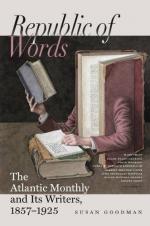This catalogue, long as it already is, by no means completes the list of the last three years’ gains of pictures for England. Such a record shows how compact with treasures the little island is becoming. And meanwhile, what is America doing in this way? The overestimate of the importance and value of Mr. Belmont’s collection in New York shows how far the American public yet is from knowing its own ignorance and poverty in respect to Art.
No praise can be given to the execution of Dr. Waagen’s book. His descriptions of pictures are rarely characteristic; his tone and standard of judgment are worthless; his style of writing is poor; his inaccuracies frequent; and his flunkeyism intolerable. It would be an excellent undertaking for a competent person, using Dr. Waagen’s book as a basis, to compress the account of the principal private galleries, those which really contain pictures of value, into one small and portable volume,—to serve as a handbook for travellers in England, as well as for a guide to the present place of pictures interesting in the history of artists and of Art. Such a volume, if well done, would be of vastly more value than these heavy four. The usual delightful liberality of English collectors in opening their galleries to the public on certain days would make such a volume something more than a mere tantalizing exposition of treasures that could not be seen, and would render it, to all lovers of Art, an indispensable companion in England. We may add that this liberality might be imitated with advantage by the directors of some collections in which the public have a greater claim. We tried once in vain to get sight of the portraits of Alleyn and Burbage at Bulwich College, and were prevented from seeing the Hogarths in the Sloane Museum by the length of time required for the preliminary ceremonies.
The New American Cyclopaedia. A Popular Dictionary of General Knowledge. Edited by GEORGE RIPLEY and CHAS. A. DANA. Vol. I. A—ARAGUAY. New York: D. Appleton & Co. 8vo.
The design of this work is to furnish the American public with a Cyclopaedia which shall be readable as well as valuable,—possessing all the advantages of a dictionary of knowledge for the purposes of reference, and all the interest which results from a scholarly treatment of the subjects. Judging from the first volume, it will occupy a middle ground between the great Encyclopaedias and the numerous special Dictionaries of Art and Science; and if its plan be




